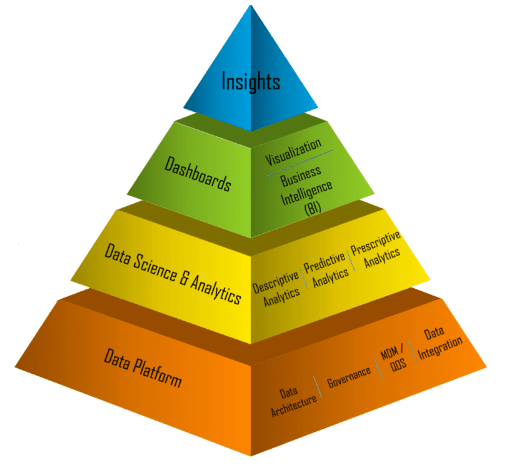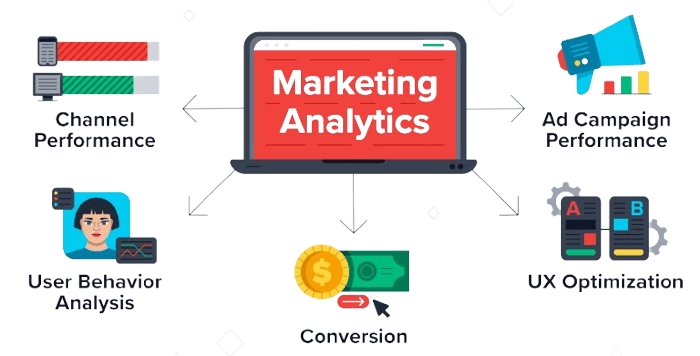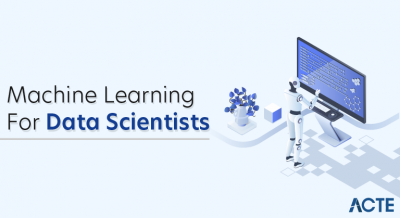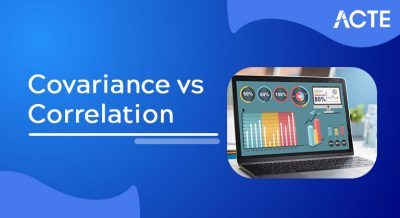
- Business Analyst: Role and Responsibilities
- Data Analyst: Role and Responsibilities
- Financial Analyst: Role and Responsibilities
- Marketing Analyst: Role and Responsibilities
- HR Analyst: Role and Responsibilities
- Risk Analyst: Role and Responsibilities
- Operations Analyst: Role and Responsibilities
- IT Analyst: Role and Responsibilities
Business Analyst: Role and Responsibilities
A Business Analyst (BA) plays a vital role in bridging the gap between business needs and technical solutions. Their primary responsibility is to understand and analyze the requirements of an organization and translate them into clear, actionable plans for development teams. BAs engage with stakeholders across departments to gather detailed information about business processes, challenges, and goals. This helps them identify opportunities for improvement and ensure that projects align with the overall strategy. Key tasks in Data Science Training include conducting interviews and workshops, documenting business requirements, and creating use cases or workflow diagrams. Business Analysts also collaborate closely with project managers, developers, and quality assurance teams to ensure the solutions delivered meet the defined requirements. They analyze data trends, assist in risk assessment, and support decision-making by providing insights into process efficiencies. Effective communication and problem-solving skills are essential for a BA to manage diverse teams and conflicting priorities. Familiarity with tools such as Excel, SQL, and visualization software enhances their ability to analyze and present data clearly. Ultimately, Business Analysts help organizations improve operations, optimize resources, and successfully implement technology-driven initiatives.
Do You Want to Learn More About Data Science? Get Info From Our Data Science Course Training Today!
Data Analyst: Role and Responsibilities
A Data Analyst plays a crucial role in helping organizations make informed decisions by transforming raw data into meaningful insights. Their primary responsibility is to collect, process, and analyze data from various sources to identify trends, patterns, and anomalies. By using statistical techniques and Top Python Libraries For Data Science, Data Analysts help teams understand complex information in an accessible way. Typical tasks include cleaning and organizing datasets, performing exploratory data analysis, and creating reports and dashboards using tools such as Excel, SQL, Tableau, or Power BI. Data Analysts work closely with business stakeholders to understand their data needs and provide actionable recommendations that drive strategic planning and operational improvements. Strong analytical skills, attention to detail, and proficiency in programming languages like Python or R are often essential.

Additionally, effective communication is key, as Data Analysts must present findings clearly to both technical and non-technical audiences. They also collaborate with data scientists, business analysts, and IT teams to ensure data accuracy and integrity. Overall, Data Analysts serve as vital contributors to data-driven decision-making processes, enabling organizations to optimize performance, reduce risks, and identify new growth opportunities.
Financial Analyst: Role and Responsibilities
- Financial Data Analysis: Financial Analysts gather and analyze financial data, including income statements, balance sheets, and cash flow statements to assess an organization’s financial health.
- Forecasting and Budgeting: They create financial models to forecast future revenues, expenses, and profits, helping businesses plan budgets and allocate resources effectively.
- Investment Analysis: Evaluating investment opportunities by assessing risks, returns, and market trends to guide decision-making for portfolios and projects.
- Reporting: Preparing detailed reports and presentations that summarize financial performance and provide actionable insights for management and stakeholders is a key step in understanding What is Logistic Regression.
- Risk Assessment: Identifying potential financial risks and suggesting strategies to mitigate them, ensuring sustainable business growth.
- Market Research: Staying updated with market conditions, economic trends, and regulatory changes that could impact financial strategies.
- Collaboration: Working closely with other departments such as accounting, sales, and marketing to align financial goals with overall business objectives.
- Data Collection: Marketing Analysts gather data from multiple sources such as market research, sales reports, social media, and customer feedback to understand market dynamics.
- Market Research: In Data Science Training, professionals learn to analyze consumer behavior, market trends, and competitor strategies to identify opportunities and threats.
- Campaign Analysis: Evaluating the effectiveness of marketing campaigns by measuring key performance indicators (KPIs) such as conversion rates, ROI, and customer engagement.
- Customer Segmentation: Using data analytics, they segment customers based on demographics, behavior, and preferences to tailor marketing strategies.
- Reporting and Visualization: Marketing Analysts create detailed reports and dashboards using tools like Excel, Tableau, or Power BI to communicate insights to marketing teams and stakeholders.
- Strategy Development: They collaborate with marketing managers to develop data-driven strategies aimed at improving brand awareness, customer acquisition, and retention.
- Continuous Monitoring: Monitoring ongoing campaigns and market conditions to adjust strategies in real-time and maximize marketing effectiveness.
- Identify Risks: Risk Analysts evaluate potential financial, operational, and strategic risks that could impact an organization’s goals and stability.
- Data Collection and Analysis: They gather data from various sources and use statistical methods and software tools to analyze risk factors.
- Risk Assessment: Advantages & Disadvantages of Python programming language include its ability to support using quantitative and qualitative techniques to assess the likelihood and potential impact of identified risks.
- Reporting: Risk Analysts prepare detailed reports and dashboards to communicate risk findings and recommendations to management and stakeholders.
- Develop Risk Mitigation Strategies: They collaborate with business units to design policies and procedures that reduce or manage risks effectively.
- Compliance Monitoring: Ensuring adherence to regulatory requirements and industry standards is a key responsibility to minimize legal and financial penalties.
- Continuous Monitoring: Risk Analysts continuously track emerging risks and update risk models to keep strategies relevant and proactive.
Would You Like to Know More About Data Science? Sign Up For Our Data Science Course Training Now!
Marketing Analyst: Role and Responsibilities

HR Analyst: Role and Responsibilities
An HR Analyst plays a vital role in enhancing human resource management through data-driven insights. Their primary responsibility is to collect, analyze, and interpret HR-related data to support strategic decision-making within an organization. By examining trends related to employee performance, recruitment, retention, and workforce demographics, HR Analysts help identify areas for improvement and contribute to more effective HR policies. Typical duties in Python vs R vs SAS comparisons include managing employee databases, conducting surveys, and using analytics tools to assess recruitment effectiveness, turnover rates, compensation trends, and employee engagement levels. They create detailed reports and dashboards using tools such as Excel, SQL, and HR-specific software, enabling HR teams and management to make informed decisions about talent acquisition, training, and workforce planning. Strong analytical skills and proficiency in data visualization are essential, along with a deep understanding of HR processes and labor laws. HR Analysts also collaborate with various departments to align HR initiatives with overall business goals. Effective communication skills are critical to present complex data in an understandable manner. Ultimately, HR Analysts help organizations optimize their workforce management strategies, improve employee satisfaction, and increase operational efficiency through evidence-based insights.
Looking to Master Data Science? Discover the Data Science Masters Course Available at ACTE Now!
Risk Analyst: Role and Responsibilities
Operations Analyst: Role and Responsibilities
An Operations Analyst plays a crucial role in improving the efficiency and effectiveness of an organization’s processes. Their main responsibility is to analyze operational data and workflows to identify bottlenecks, inefficiencies, and areas for improvement. By studying trends and patterns, Operations Analysts help streamline business operations, reduce costs, and enhance productivity. Typical duties include collecting and interpreting data related to supply chain management, production schedules, customer service, and inventory control. Top Reasons To Learn Python include using tools like Excel, SQL, and data visualization software to create reports and dashboards that communicate key performance indicators (KPIs) to management. Operations Analysts collaborate closely with cross-functional teams such as logistics, finance, and IT to implement solutions and monitor their impact. Strong analytical skills, attention to detail, and problem-solving abilities are essential for success in this role. Additionally, effective communication is vital, as Operations Analysts must present complex data findings in a clear and actionable manner. Their insights enable organizations to make data-driven decisions, optimize resource allocation, and maintain smooth daily operations. Ultimately, Operations Analysts contribute significantly to organizational growth by enhancing operational workflows and supporting strategic initiatives.
Preparing for a Data Science Job Interview? Check Out Our Blog on Data Science Interview Questions & Answer
IT Analyst: Role and Responsibilities
An IT Analyst plays a key role in ensuring that an organization’s technology systems align with its business goals and operate efficiently. Their primary responsibility is to analyze, design, and implement IT solutions that support business processes and improve overall performance. IT Analysts assess current systems, identify gaps or issues, and recommend upgrades or new technologies to enhance productivity. Typical tasks include gathering and documenting business and technical requirements, collaborating with stakeholders, and liaising between IT teams and business units. Data Science Training covers evaluating software and hardware options, supporting system integration, and assisting in troubleshooting technical problems. IT Analysts may also participate in project management activities, ensuring that IT initiatives are delivered on time and within budget. Strong analytical skills and a solid understanding of information technology concepts are essential. Familiarity with programming languages, databases, networking, and cybersecurity principles often benefits IT Analysts. Effective communication skills are crucial, as they must translate technical jargon into clear information for non-technical stakeholders. Overall, IT Analysts help organizations leverage technology strategically, ensuring systems run smoothly, support business needs, and adapt to changing market demands.





